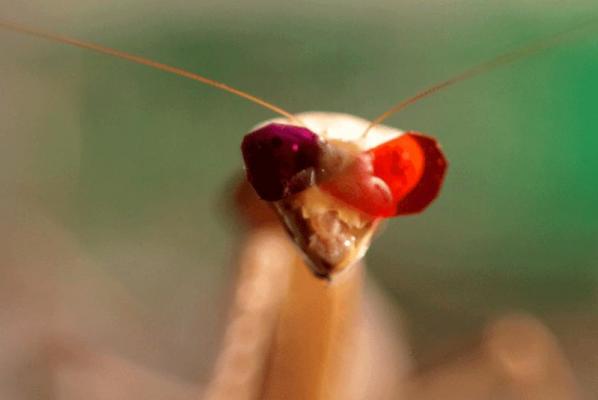
Feb. 8 (UPI) — New research has shown that praying mantises have a unique mechanism for seeing in 3D — different from the way humans and other animals see in three dimensions.
Human eyes merge the images fielded by each eye, calculating the differences between the two angles to gauge how far away different objects are. The process yields a 3D visual world. The ability is sometimes called stereo vision.
Many other mammals use a similar technique to see the world largely the same way we do, but the praying mantis is the only insect with 3D vision. However, the latest research — published this week in the journal Current Biology — suggests the mantis has evolved a different way to see in 3D.
Scientists used a set of tiny 3D glasses, affixed with beeswax, to study the way the praying mantis processes visual stimuli.
While sporting the glasses, the mantis was shown a movie of moving prey right in front its eyes. The mantis tried to catch the digital prey.
Scientists also showed the insect complex 2D dot-patterns designed to analyze human 3D vision. By comparing how insects responded to the patterns, researchers were able to note differences in the way humans and mantises see in 3D.
The tests showed mantises mostly ignore the still images, or dot patterns, scanning only for places where the picture is changing. That’s because mantises only need their 3D vision to hunt moving prey. Humans, on the other hand, are excellent at interpreting 2D still images in 3D.
Scientists found mantises were able to spot tiny changes in the dot patterns — movements humans are unable to identify.
“This is a completely new form of 3D vision as it is based on change over time instead of static images,” Vivek Nityananda, a behavioral ecologist at Newcastle University in England, said in a news release. “In mantises it is probably designed to answer the question ‘is there prey at the right distance for me to catch?'”
Researchers believe the new findings could help scientists design simpler, more efficient visual technology for robots.
“Many robots use stereo vision to help them navigate, but this is usually based on complex human stereo,” said engineer Ghaith Tarawneh. “Since insect brains are so tiny, their form of stereo vision can’t require much computer processing. This means it could find useful applications in low-power autonomous robots.”






